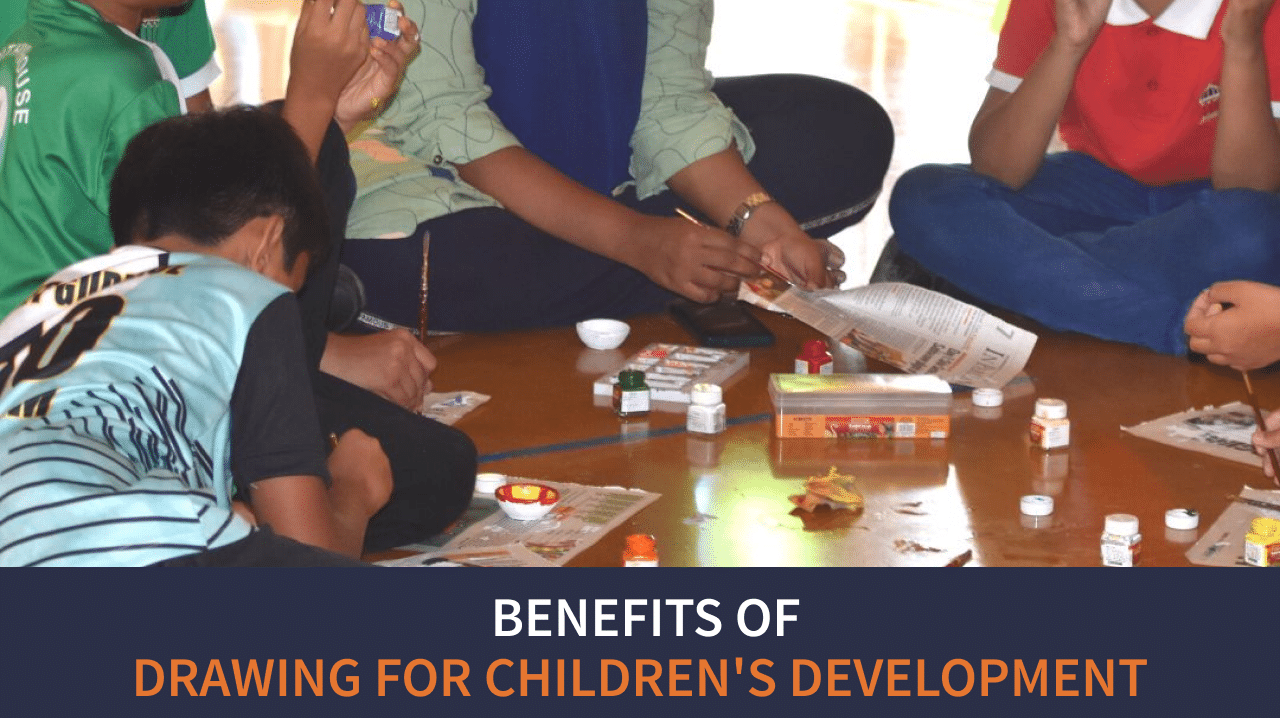Benefits of Drawing for Children’s Development

Drawing for Children’s Development
Shyness, hesitation, and unwillingness to talk are some of the most common aspects that we notice in children. It can be quite difficult to break that barrier, and that is where drawing plays a significant role; it is more than just a fun activity and has multiple benefits that add to their overall development in the long run.
The most amazing benefits of drawing relate to children’s increased ability to transform their creative and imaginative ideas on paper. In addition, it improves their motor skills.
Benefits Of Drawing For Children
Finer Motor Skills
Education is ineffective until and unless it is holistic and engages children in the active learning process. Drawing is one of the most significant and popular ways to engage students.
A popular misconception suggests drawing is merely to pass the time and a leisurely activity; however, it has multiple benefits and significantly impacts their finer motor skills. For instance, when they draw geometrical shapes, designs and patterns, it helps to improve their hand-eye coordination and motor control.
In fact, it provides immediate visual feedback, allowing children to improve their technique and get the desired result.
Boosts Creativity and Imagination
Young children are in the process of developing their literary and vocabulary skills, so it might be a little difficult to express themselves in words. On the other hand, one of the most crucial advantages of drawing is that it gives them a platform to express themselves.
- It improves visual thinking skills, which expands their imagination
- It increases their ability to recognise patterns.
Improved Cognitive Development
Engaging in drawing sessions opens their mind to various possibilities; for example, combining two colours leads to creating a new one and develops their visualisation power. Furthermore, the benefits of drawing for students ultimately result in cognitive development.
As a result, they can visualise whatever they are asked to draw or want to draw and present a unique and individualised picture.
Also Read:
> The Art Scenario at MIT Gurukul
> Five Best Ways to Make Learning Fun and Exciting for your students
> 6 Benefits of Outdoor Play For Kids
Emotional Expression and Communication
Children are sensitive, vulnerable, and easily affected; therefore, it becomes hard for them to communicate their feelings. While some may cry until they get proper attention, others tend to keep quiet, but drawing can be their medium to express their feelings.
Furthermore, that is where we can find the most critical benefits of art, wherein children draw a picture to indicate their turmoil, happiness, sadness, fear or anger.
Patience and Persistence
Whether drawing a house, a tree, or anything else, they know that creating something beautiful or what they have in mind requires focus. It’s not just being mindful about not letting the colour go beyond the outline of the drawing.
Rubbing the outline and redrawing it until they get the desired result; in effect, it teaches them patience and persistence.
Self-esteem and Confidence
The traditional education system attempts to mold all children into ideal students whose ultimate achievements would be reflected in their academic results. However, all children are different, and drawing provides a platform to express individuality.
Moreover, noteworthy benefits of drawing as a hobby include elevated self-esteem and confidence, allowing one to celebrate their uniqueness. Consequently, it leads to taking an interest in their academics, ultimately improving their overall performance.
In Conclusion,
Drawing has multivarious benefits and more than just co-curricular or pass-time activities; therefore, MIT Gurukul emphasises drawing classes. Furthermore, it encourages drawing as a primary part of curricular activities, helping to improve student’s confidence and imagination.

